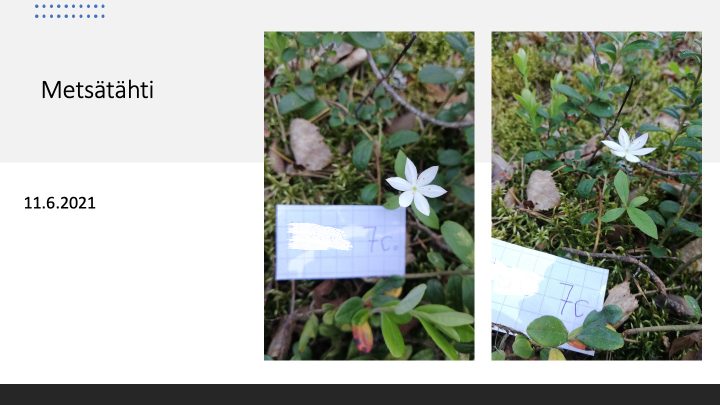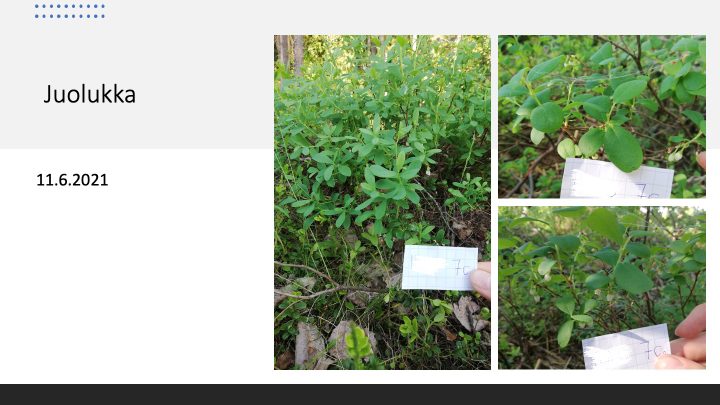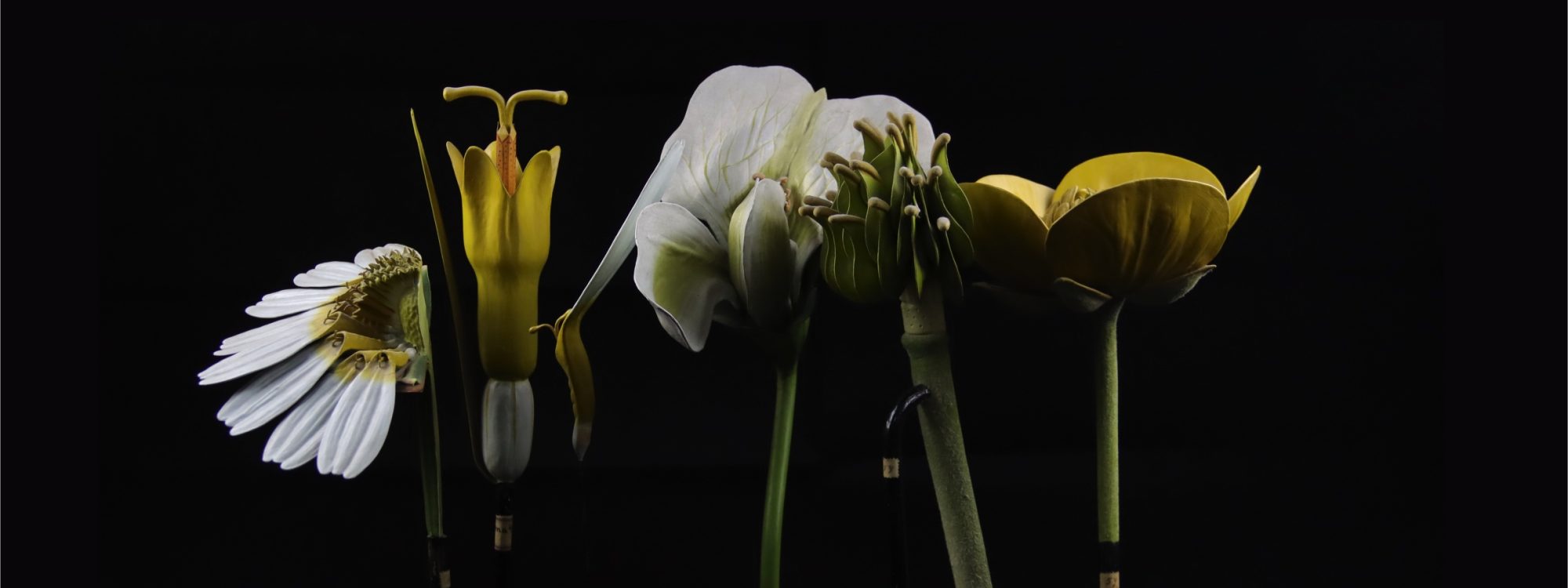School herbaria
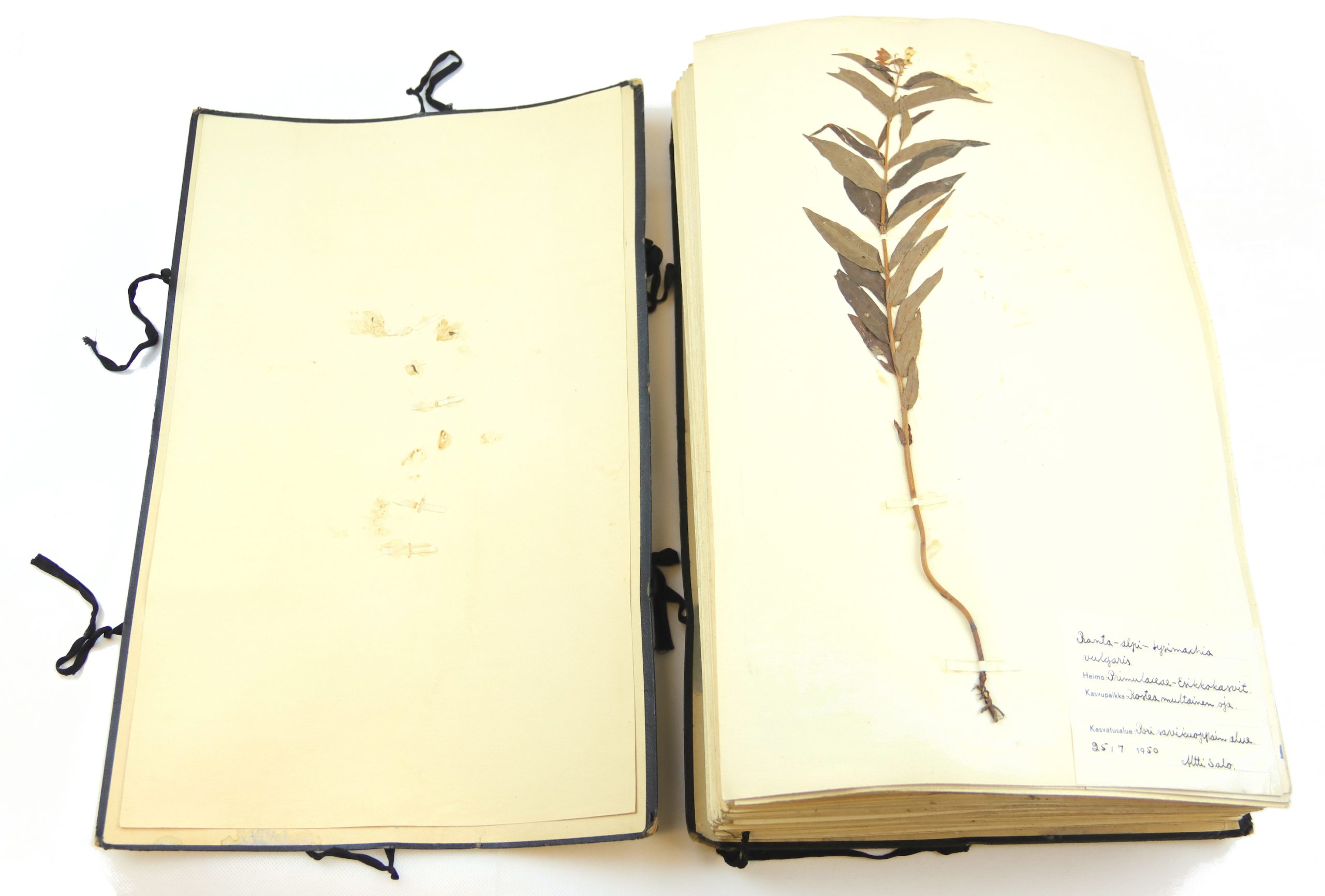
Making a collection of dry plants, i.e. herbarium, was a familiar activity for older generations. Species identification skills were considered so important in the 19th century that collecting and identifying plants became mandatory in grammar schools in the 1860s, with an obligation of collecting a herbarium of 70 species. Demands increased, until in 1915 the Finnish high school of Turku required its students to collect a herbarium of 250 plant species! After that, the requirements started to decrease. This school herbarium collected in Pori at the turn of the 1940s and 50s has 120 species of plants.
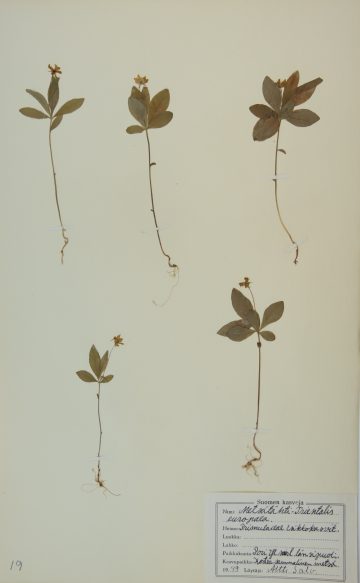
Trientalis europaea
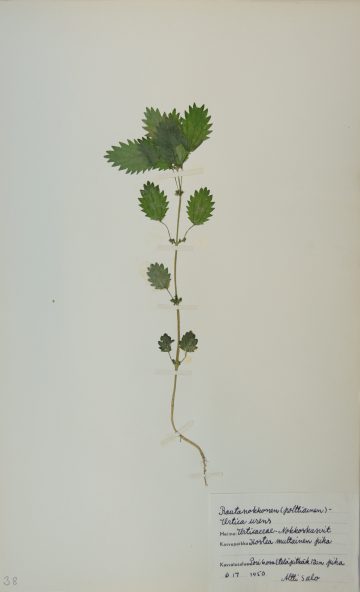
Urtica urens
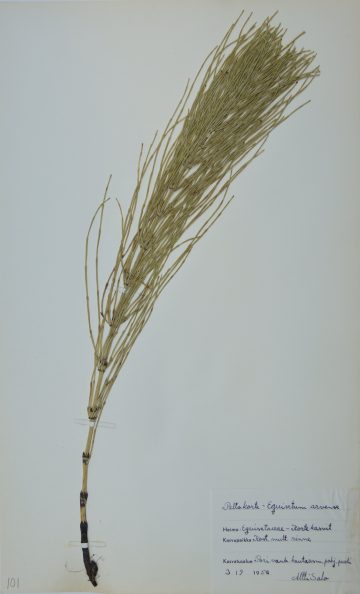
Equisetum arvense

Crepis tectorum
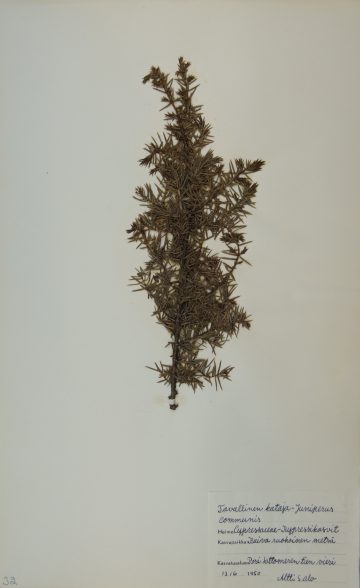
Juniperus communis

Omalotheca sylvatica
Plant collecting in schools was ceased in 1969. This was done to protect nature from excessive collection of rare species and save children and their parents from the trouble of collecting plants. Collecting plants also involved a lot of cheating and grading the herbarium was generally considered arbitrary.
This school herbarium was given a grade 7 1/2 on a scale of 4–10. Criticism came from the excessive use of paper stripes to attach plants on the sheets.
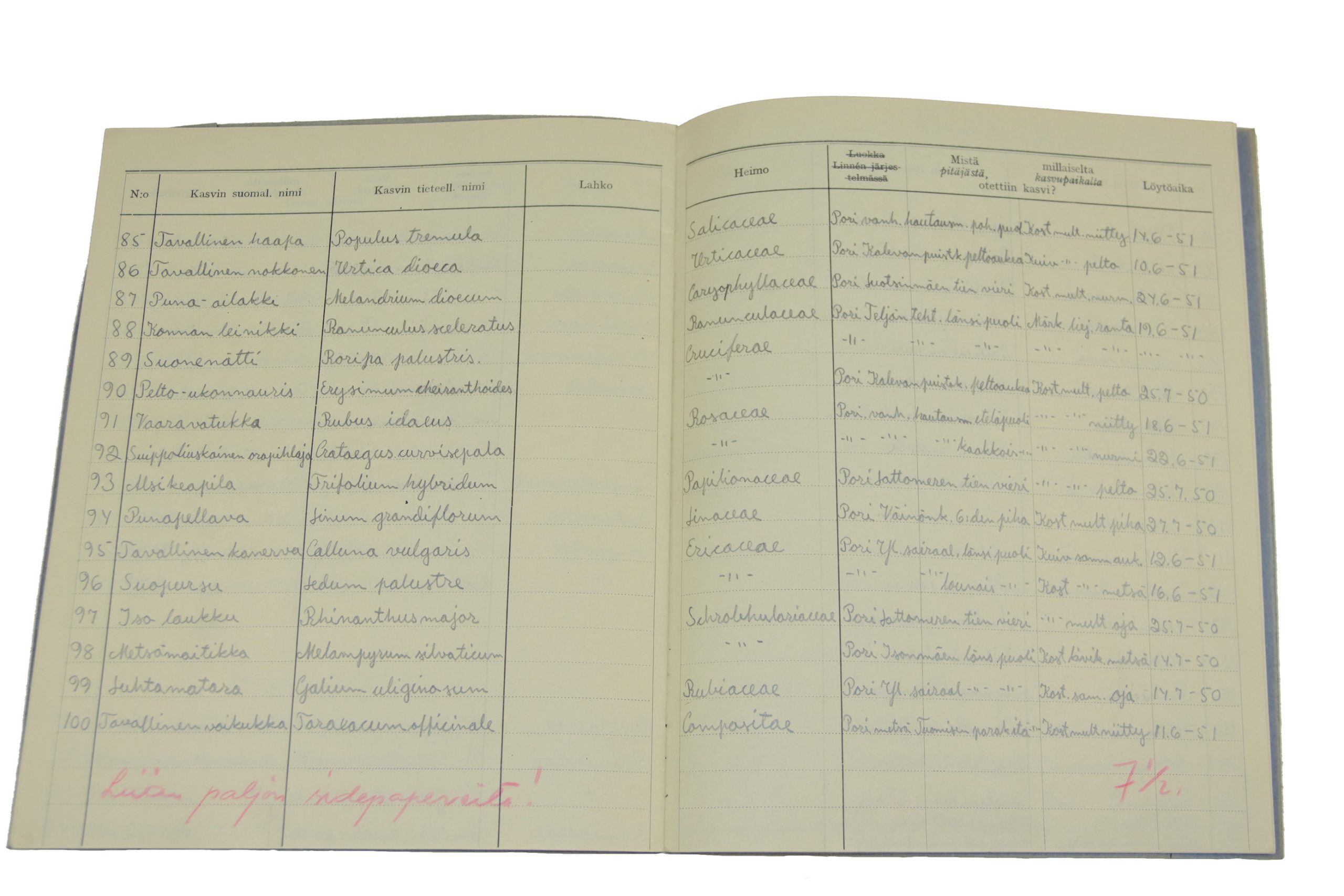
The teacher was probably upset by these specimens

Eriophorum vaginatum
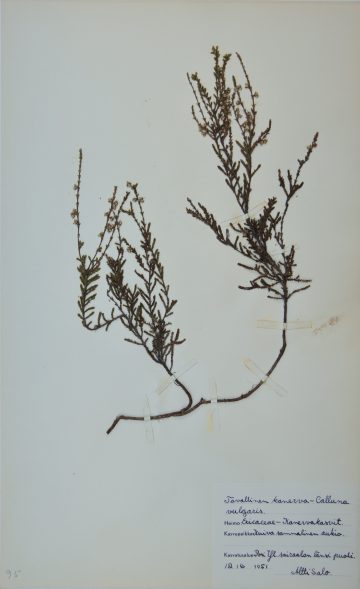
Calluna vulgaris
Soon after the mandatory plant collecting ended, it was noticed that the species identification skills of children had collapsed. And can a person who doesn’t know nature really appreciate it? It was feared that the idea of conserving nature had turned against itself. Hence, in 2004, plant collecting returned to Finnish school curricula. It has been shown that collecting even a small herbarium improves children’s species identification skills much more than studying in classroom.
Nowadays, school herbaria are often collected by compiling digital images of plants taken with a cell phone, as below. The government no longer determines the number of plants to be collected as in the old days, and the number of plant species required usually varies between 20 and 40 depending on the school.


